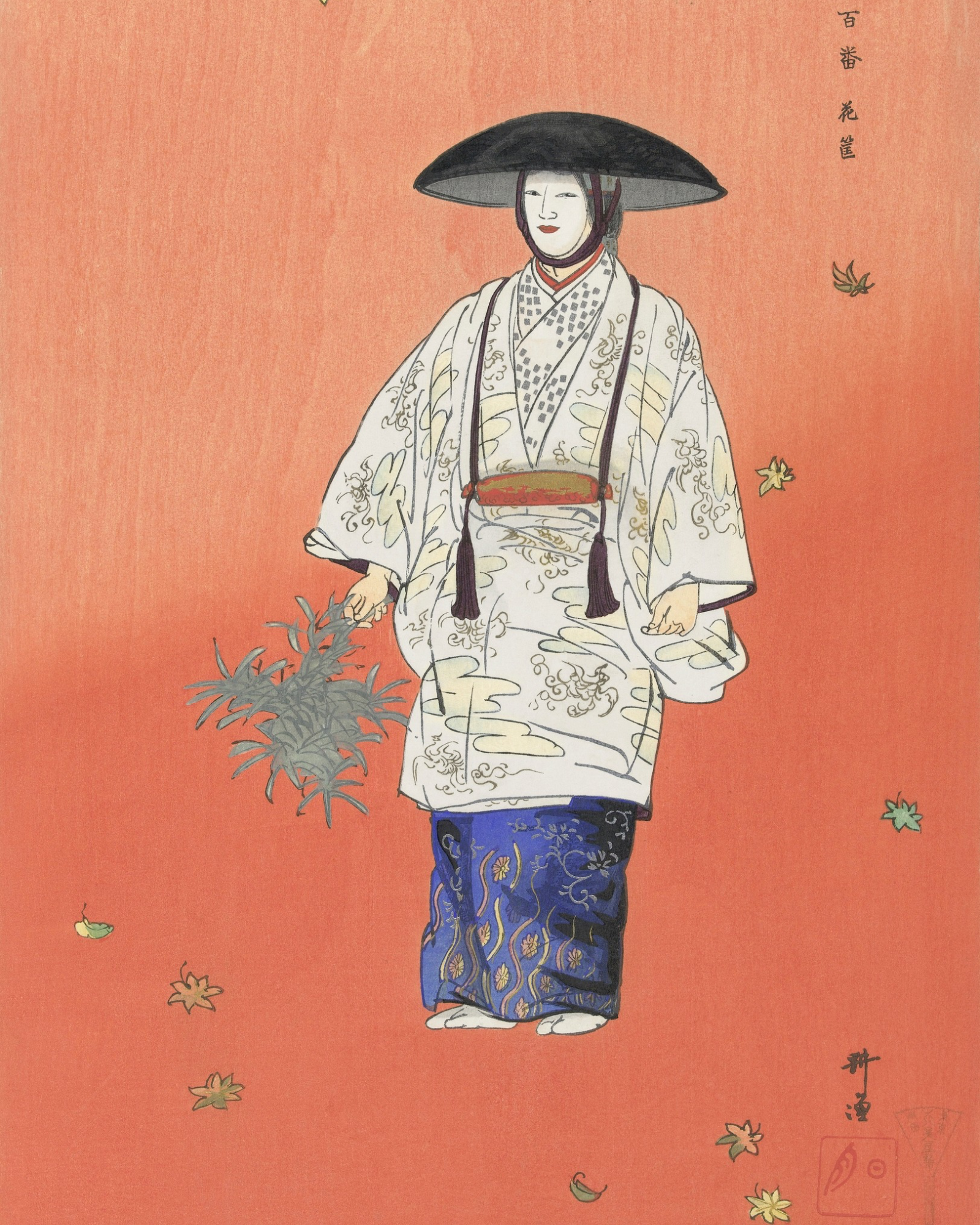Ohara Koson: The Master of Japanese Nature Prints

Ohara Koson (1877–1945) is a name synonymous with the beauty and tranquility of nature captured in Japanese shin-hanga (new prints). Renowned for his exquisite depictions of birds, flowers, and animals, Koson’s art combines delicate details, vibrant colors, and a serene atmosphere. His works are celebrated worldwide for their ability to convey the harmony and elegance of the natural world.
The Life and Artistic Journey of Ohara Koson
Born in Kanazawa, Japan, a city known for its rich cultural heritage, Koson grew up surrounded by traditional crafts and nature’s beauty. Initially trained as a painter, he later transitioned to ukiyo-e woodblock prints, where he found his true calling.
Koson was part of the shin-hanga movement, which revitalized traditional ukiyo-e techniques with modern sensibilities. Collaborating with publishers like Watanabe Shōzaburō, Koson created prints that appealed to both Japanese and Western audiences. His works gained immense popularity in the early 20th century, especially among Western collectors, due to their blend of traditional Japanese aesthetics and contemporary artistic trends.
Ohara Koson’s Artistic Style and Techniques
Koson’s art is characterized by its meticulous attention to detail, harmonious compositions, and the ability to capture the essence of his subjects.
Delicate Details: Koson’s prints are known for their intricate depiction of feathers, petals, and textures. This precision brings his subjects to life, making his work both realistic and poetic.
Subtle Use of Color: Koson employed a refined color palette, often featuring soft gradients and muted tones. His skillful use of bokashi (color gradation) adds depth and atmosphere to his prints, enhancing their visual appeal.
Composition and Balance: Koson’s works often feature asymmetrical compositions inspired by traditional Japanese art. By carefully balancing his subjects within the frame, he creates a sense of tranquility and natural elegance.
Themes in Ohara Koson’s Art
Birds and Flowers (Kachō-e): Koson is best known for his kachō-e prints, which depict birds and flowers with extraordinary beauty. From cranes in flight to cherry blossoms in bloom, these prints celebrate the harmony and fleeting beauty of nature.
Seasonal Imagery: Koson’s art often reflects the changing seasons, a key theme in Japanese culture. Snow-covered branches, blooming irises, and autumn leaves appear frequently in his work, capturing the essence of each season.
Animals in Their Habitat: While birds dominate Koson’s portfolio, he also depicted animals like deer, foxes, and fish. His prints highlight the quiet grace and natural behavior of these creatures, emphasizing their connection to their environment.
Iconic Works
Cranes Under the Moonlight: This serene print features a pair of cranes standing in shallow water under a glowing full moon. The delicate interplay of light and shadow creates a peaceful, dreamlike atmosphere.
Swallows and Wisteria: In this vibrant composition, swallows flutter gracefully around cascading wisteria blooms. The dynamic movement of the birds contrasts beautifully with the gentle elegance of the flowers.
Snow on Willow and Heron: This minimalist print captures a solitary heron perched on a willow branch, dusted with snow. The simplicity of the composition enhances its poetic charm and meditative quality.
Global Recognition and Influence
Ohara Koson’s works gained widespread popularity during the early 20th century, particularly among Western collectors. His prints were often sold in Europe and America, where they were admired for their exquisite craftsmanship and natural themes.
Koson’s art continues to be celebrated in exhibitions and collections worldwide, including institutions like the British Museum, the Rijksmuseum in Amsterdam, and the Art Institute of Chicago. His ability to blend traditional Japanese aesthetics with universal appeal has ensured his lasting legacy.
Legacy and Impact
Ohara Koson played a significant role in the shin-hanga movement, helping to revive the tradition of ukiyo-e while introducing it to a global audience. His dedication to capturing the beauty of nature inspired many artists and remains a source of fascination for art enthusiasts.
Koson’s work also highlights the importance of preserving and appreciating the natural world. Through his prints, viewers are reminded of the delicate balance and fleeting beauty of life, making his art both timeless and deeply resonant.
Ohara Koson’s mastery of shin-hanga elevated the genre of nature prints to new heights. His ability to capture the elegance and essence of birds, flowers, and animals reflects his deep connection to the natural world and his dedication to his craft.
Koson’s prints are more than beautiful images—they are windows into the serene and harmonious spirit of nature. His legacy continues to inspire admiration and reverence, ensuring that his work remains a treasured part of Japanese art history.